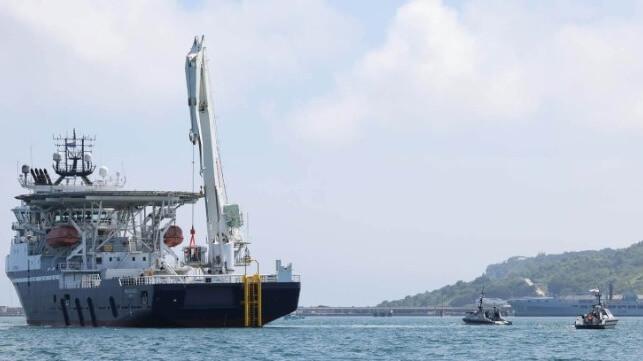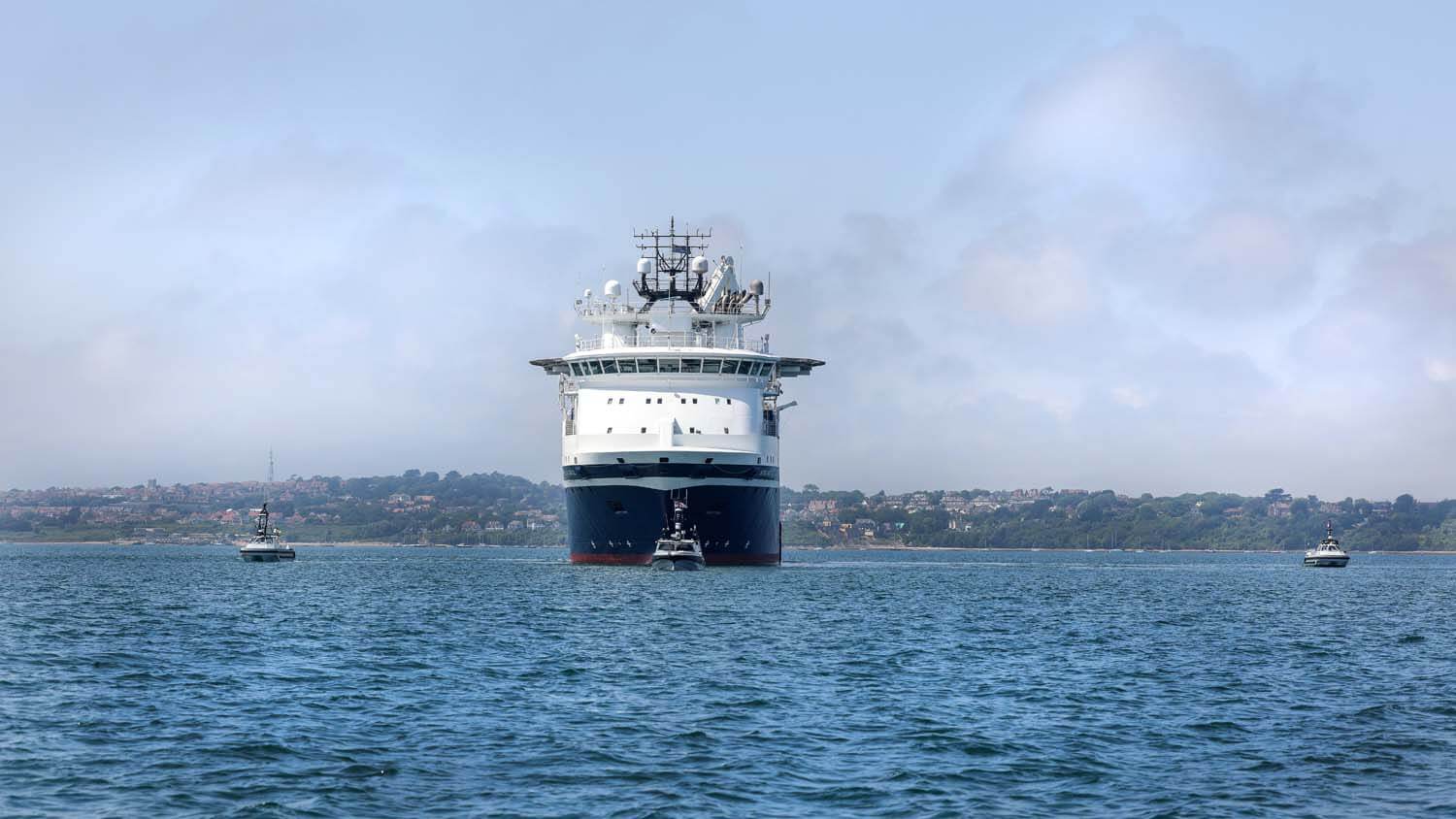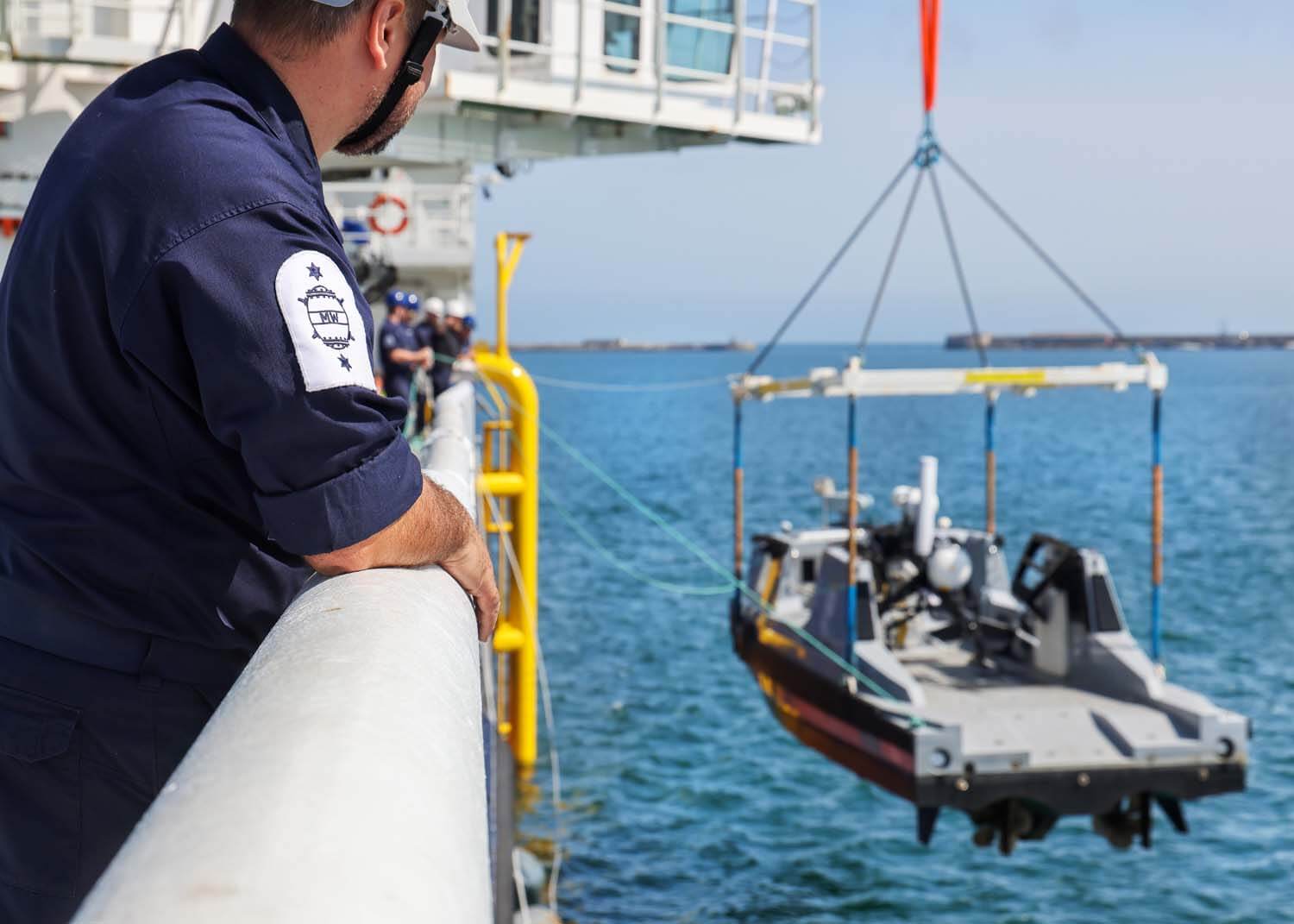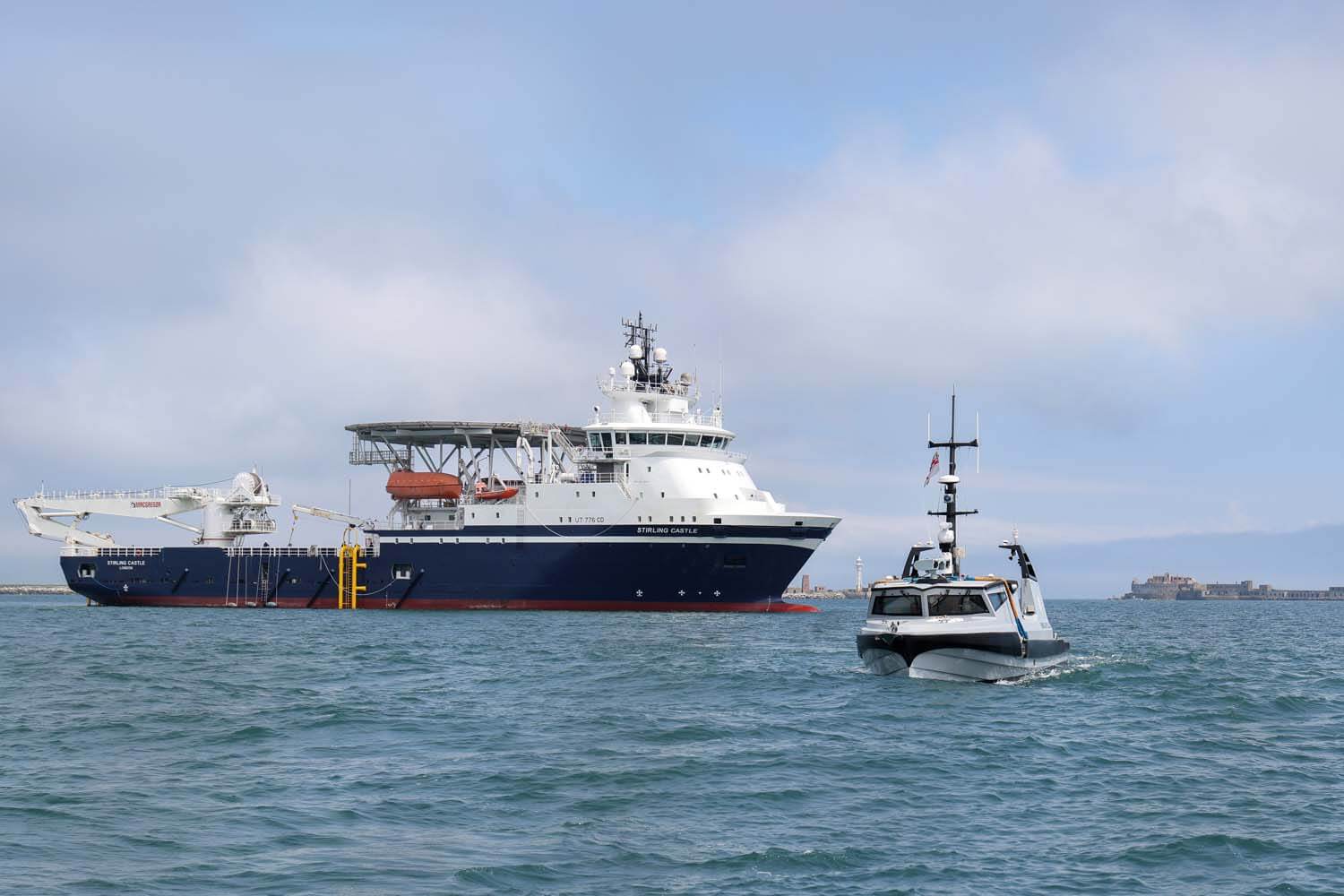Autonomous Vessels Join UK's Minehunting Mothership for Debut Trials

A minehunting 'mothership' and autonomous vessels were trialled together for the first time in a milestone moment for the future of the UK’s mine counter measure operations.
The three boats joined RFA Stirling Castle in Portland, Dorset, for a series of tests as the navy looks to adopt autonomous minehunting systems.
Royal Navy Motor Boats Apollo, Hydra and Hazard zipped around the water off the south coast as part of initial loading trials with the recently-purchased Royal Fleet Auxiliary ship.
The trials were carried out alongside partners Defence Equipment & Support (DE&S), the procurement arm of the Ministry of Defence.
The main aim of the week was to prove autonomous vessels could be hosted on board Stirling Castle and eventually controlled or remotely-piloted from the ship. This will be the norm for the ship when she officially joins the RFA fleet following a naming ceremony in August and deploys on operations.
Using autonomous and uncrewed equipment removes the threat to naval personnel by keeping them well away from the minefield, leaving robots systems to do the legwork. It also allows more extensive searches of the sea.



The navy’s Maritime Autonomous Systems Trials Team (MASTT) embarked on Stirling Castle to oversee the week-long trials and were pleased with the initial fusing of ship and autonomous boats.
Lieutenant Commander Jason Munson, Officer in Charge of MASTT, said: “The trials marked a significant milestone in the Mine Hunting Capability Programme. Operating from a host platform will allow our autonomous vessels to be used in a wider range of environment. The integration with RFA crew has been really successful, and the lessons learnt will contribute to getting this equipment to the front line.”
Stirling Castle joined the Royal Auxiliary Fleet to act as a “mothership” for autonomous minehunting systems. When operational, the ship will launch and recover the vessels, as well as analyse the data they gather while scouring home waters for mines and underwater explosive devices.
In doing so, the ship and the autonomous boats will begin to replace traditional mine countermeasures vessels, instead exploiting a series of advanced payloads such as towed sonars and remotely-operated neutralisation systems from a Remote Command Centre.
The opinions expressed herein are the author's and not necessarily those of The Maritime Executive.
